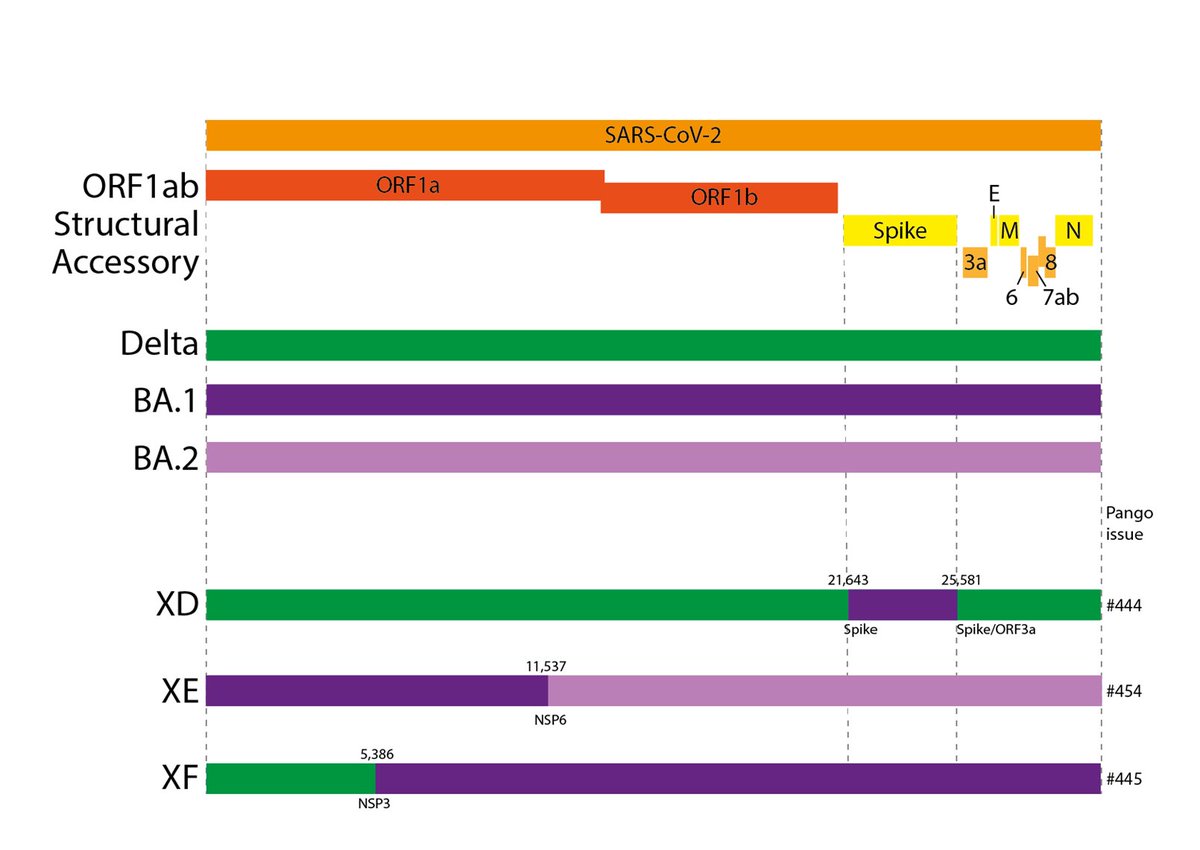
Surveillence minded folks - worth keeping a close eye on BA.2.75 - lots of spike mutations, probable second generation variant, apparent rapid growth and wide geographical spread...
github.com/cov-lineages/p…
github.com/cov-lineages/p…
Spike mutation-wise its got normal BA.2 mutations + K147E, W152R, F157L, I210V, G257S, G339H, G446S, N460K and reversion of R493Q - none of these individually really flag as that worrying but all appearing together at once is another matter...
...and an old thread on 'what second generation variants are' here - didnt really talk about this at the time but theres now a growing consensus that these could be arising from chronic infections
https://twitter.com/PeacockFlu/status/1468626571791671304
worth saying its entirely possible this is just growing against a background of BA.2(.12.1) and that it hits the encroaching wall of BA.5 and stalls out... we will see
Full credit to all the sequences submitters who've been finding this around the world, Silcn for flagging to pango and @LongDesertTrain @siamosolocani @nzm8qs and @shay_fleishon who've been helping monitor it the past few weeks.
also the covspectrum query (thanks @CorneliusRoemer)
https://twitter.com/CorneliusRoemer/status/1542569826702741504
• • •
Missing some Tweet in this thread? You can try to
force a refresh









